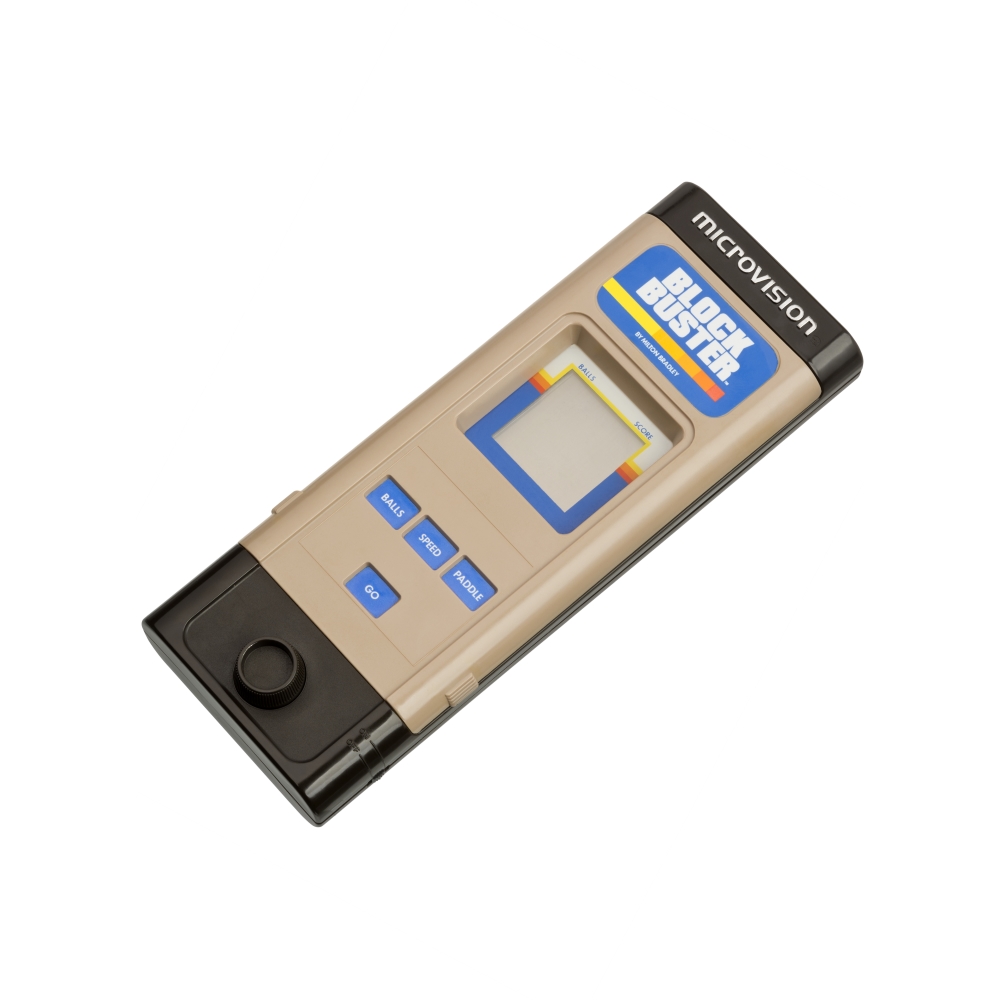|
History
In 1978, after the huge success of their Simon games (which was co-invented by Ralph 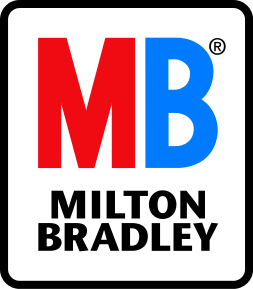 Baer, the creator of the Magnavox Odyssey), Milton Bradley (MB) was looking for its next toy line. One year after the release by Mattel of Auto Race, the first electronic handheld game ever made, and since then, the handheld market was on the verge of exploding and Milton Bradley wanted in on the action.
Baer, the creator of the Magnavox Odyssey), Milton Bradley (MB) was looking for its next toy line. One year after the release by Mattel of Auto Race, the first electronic handheld game ever made, and since then, the handheld market was on the verge of exploding and Milton Bradley wanted in on the action.
Smith Engineering, a firm specialized in the development of electronic toys came to see Milton Bradley and pitched the idea of a new video game. The firm was owned by Jay Smith, a 39-year-old engineer who would later design the Vectrex gaming console. Jay who had already worked on the Mattel Football electronic handheld, was the perfect match for Milton Bradley and was commissioned to develop their new toy line for 1979.
Since the inception of the home video game with the Magnavox Odyssey in 1972, the concept of interchangeable cartridges was around, even if it’s not until the introduction of the Fairchild Channel F in 1976, the first gaming device to use ROM-based cartridge, that the cartridges-based system became the norm and not the exception. Due to technical challenges, no company had ever attempted to create a handheld with cartridges supports until Jay Smith decided to crack the case.
The main problem was that at the time, the option for display on a portable device of any kind was fairly limited. LED display technology at the time was very primitive and could not create a complex game field. Vacuum fluorescent displays (VFD) was also a new technology at the time but required high power consumption and high manufacturing cost, both of which was not ideal for a hand-held game. The other display technology of the time was the LCD display, but at the time, those displays was only able to produce 3 rows of active dots which was definitely not enough for a video game.
At the time, the biggest producer of LCD screens was Hughes Aircraft and Jay Smith had started a side business creating the chemical used in the LCD and sold them to Hughes Aircraft. Jay was already very familiar with the LCD technology and decided to expand the capacity of LCD technology. By taking into consideration that some line will always be ON which did not require a lot of attention CPUs-wise, while most of the screen would only be on while certain moving parts traverse them, Jay managed to bring the number of rows to 16 which was unheard of at the time.
The first design of the Microvision was about the size of a Game Boy, but Milton Bradley wanted the device to be bigger as they think a bigger console could fetch a higher retail price.
Once the design was completed, MB worked with Smith Engineering on the manufacturing, game creation and in November 1979, about 1 year after the beginning of the project, the Microvision was released along 5 games.
Microvision
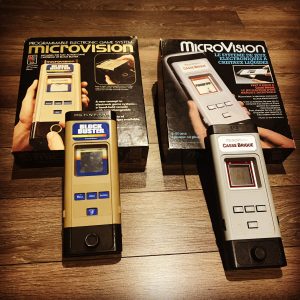
The Microvision, released in the U.S., Canada and Europe, was a commercial success at the time and grossed some $8 million for Milton Bradley, and helped boost Smith Engineering into a million-dollar operation.
Smith Engineering was convinced that the technology could be further improved and invested a lot of money in R&D to develop the next iteration of the Microvision. They first pitched a 32 x 32 LCD screen to Milton Bradley, but MB didn’t seem to think the improved display capacity was enough of a selling point to justify a new release. Smith Engineering then designed a console that would have been years ahead of its time with a quarter-wavelength LCD display which would have produced a 32 x 32 Back-lighted Color LCD display, a common set of buttons instead of using dedicated button on each cartridge and a common CPU instead of having a CPU on each cartridge, all of this for a price marginally higher than the Microvision. Again, the system was turned down by Milton Bradley as they thought the video game market was a fad.
This attitude was one of the major reasons for the downfall of the Microvision. The home video game console market was evolving very rapidly and the limitation of the Microvision technology was showing more and more each passing month.
One of the reason Milton Bradley didn’t want to invest in a new video game system was the number of issues that the Microvision brought them. Aside from the various lawsuits for copyright infringement over some of the title released, the Microvision had various problem.
The most common issues where with LCD display. The manufacturing process was very delicate and if any impurities were introduced before the sealing the screen or if the sealing process was not perfect for any other reason, this would result in the liquid crystal leaking and permanently darkens the screen. This condition known as Screen Rot was one of the main problems. The screen could also be damaged if heated, which could happen by only letting your device in the sun for an extended period of time.
The second problem was with the microprocessor within each cartridge. By opening the protective sliding doors that cover the cartridge pins, a user could give a static discharge (ESD) to the microprocessor. The low-voltage integrated circuit inside the cartridge was extremely sensitive to discharge and could be destroyed by a simple shock.
The build quality of the button where also a problem and would inevitably become unresponsive after an extend uses. All of theses issue were plaguing Milton Bradley who had to deal with a lot of return and customer complaints.
Milton Bradley also had to face another problem when purchasing issues made it impossible for them to acquire the Intel 8021 processor needed for the cartridge. To supply to the demand, they had to switch to a Texas Instruments TMS1100 processor, a more primitive CPU which required that all games to be reprogrammed to work on the TMS1100. The TMS1100 had the advantage of required less power, and required only one 9-volt battery instead of two. Since redoing the mold would have cost a lot of money, Milton Bradley decided to keep the two batteries compartment but only use one of them. The second was called the “spare battery holder” but was not inline in the system. The user would have to physically interchange the two batteries to use the second one.
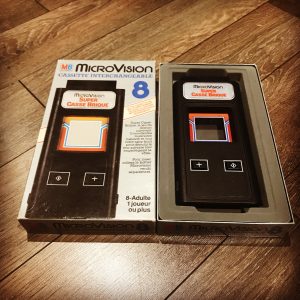
Although the first year was very successful, Milton Bradley failed to generate more interest around its console. Instead of pursuing the development with Smith Engineering, they decided to let the console die. In 1981, only 1 year after the official launch of the console saw only 2 released games. A third game (Super Block Buster) released in Europe in 1982 and was planned to be released around Christmas 1982 in the US alongside another game called Barrage. The games were not released for Christmas, making Super Block Buster a European exclusive and Barrage the only unreleased game for the systems.
Games
Each games cost $19.99. At launch 5 Games were available (November 1979):
- Block Buster
- Bowling
- Connect Four
- Shooting Star
- Pinball
By the end of 1979, three other games were launched
- Mindbuster
- Star Trek: Phaser Strike (later released as just Phaser Strike)
- Vegas Slots
In 1980–1981, only four games were released:
- Baseball (1980)
- Sea Duel (1980)
- Alien Raiders (1981)
- Cosmic Hunter (1981)
In 1982, Super Block Buster was released in Europe.
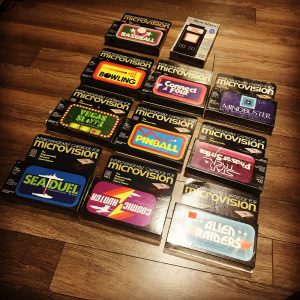
Collector Note
The system is not very popular among collectors and is still fairly cheap at the time of the writing of this article, although it is pretty rare to find in working condition. The games are commonly found over the internet and as a lot of new old stock has been found over the years, sealed games are still fairly common.

